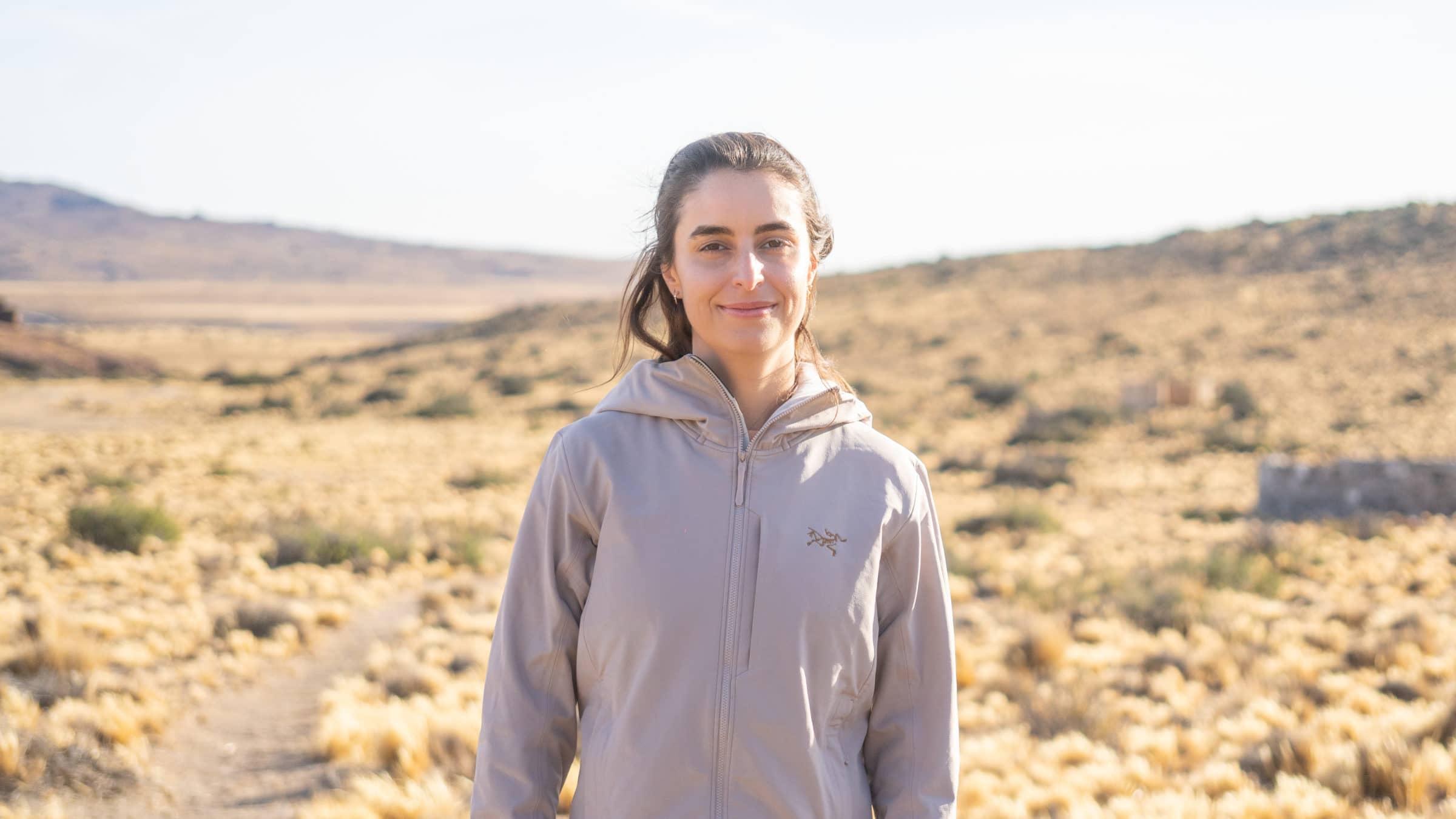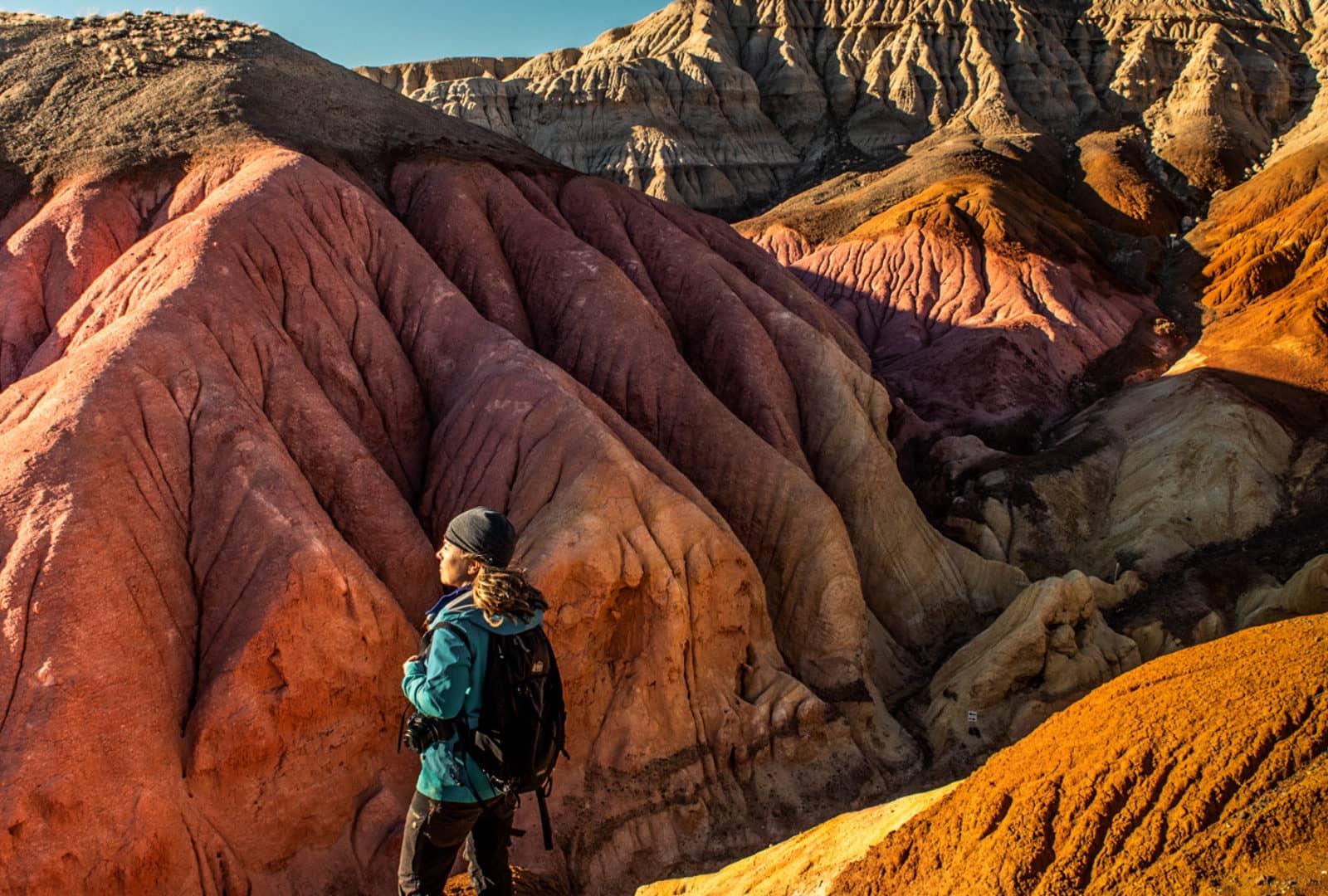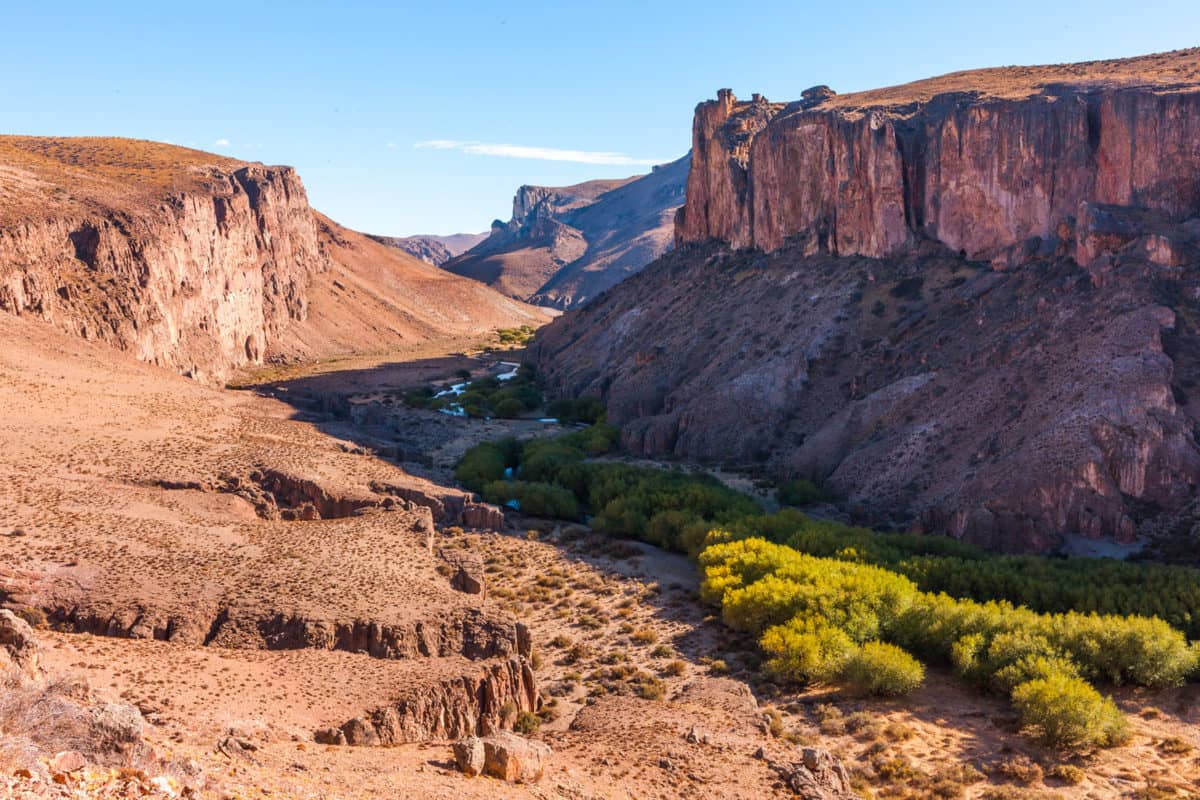La Nación: The young heiress using her wealth to save the planet

This article is a translation of the original piece, originally published in Spanish in La Nación.
After the death of her father – a powerful U.S. real estate developer – Anne Deane dedicated her wealth to conserve lands and oceans and protect biodiversity.
At 21, Anne Deane sat down to write her own obituary. Still shaken by the death of her father (an Irishman who emigrated to the United States and amassed a fortune of millions as a real estate developer), the young heiress faced a dilemma that transcended finances and reached into the existential: she did not know what direction to take with her new wealth nor with her life in general. So, it occurred to her to do this exercise as a way of reflecting on her future legacy. When the time came, how did she want to leave this world, and how did she want to be remembered?
Reflecting on her death changed her life. After that experience, she closed her New York-based sustainable fashion brand to create Freyja Foundation and dedicate herself to land and ocean conservation around the world – although, over time, by some fate and much conviction, she ended up focusing almost entirely on South America.
South America was never completely foreign to her. Although she was born in Paris and grew up in the United States (she lived in the city of Boston until graduating high school and studied literature and political science at Duke University in North Carolina), Anne knew the southern part of the continent from a very young age, as it was a frequent destination for family vacations. It was also her destination of choice when, after her father’s death, she took a sabbatical.
“I needed to grieve, to get away from the noise and take a break from the real world, so to speak. I visited different communities, did a lot of camping and went to many beautiful places in Argentina, Brazil and Peru. I was deeply sad, but nature helped me heal. Just being immersed in nature was a hugely healing process: there I was, so down inside, but being surrounded by a lush, living jungle showed me in its own way that things always evolve. Thanks to those experiences, I was able to make peace with the idea that life goes on.”
During that trip, Anne became aware of something else: the intense degradation of nature and the urgent need to prevent a snowballing catastrophe. She wanted to do something about the problems she saw and understood she could make a significant impact by putting her wealth into action. Her family had always had a strong philanthropic streak. Historically, however, the Deane’s philanthropy had supported medical research. Working with her brother Carl, a nature lover like herself, Anne redirected those funds toward conservation.
“We realized we had to do it. There was no one else our age working on a large scale to protect biodiversity; most of the people doing it were over 60. But people were beginning to accept that climate change was a fact, and I was convinced that ecosystem conservation had to be part of that story.”
To name the foundation, Anne was inspired by a character from the Norse mythology books she read as a child: Freyja is the goddess of fertility, love and beauty, as well as strength in battle. In short, life and death: a permanent tension that has always manifested in nature’s cycles. Of course, in the current context of an unprecedented climate crisis, this fragile balance seems to be giving way to irreversible damage. Against this backdrop, Anne says she considers herself “absolutely optimistic”: “If I had no hope, what would be the point of it all? I never felt that giving up was an option. I still dream big and believe that anything is possible. What’s more, at some point, I love that the challenge is tough and complex.”
She adds, “What we achieved in Patagonia Park is the perfect motivation: six years ago, when I first came, there was nothing here except cattle which, after nearly a century, had destroyed the soil and native vegetation. Now, the abundance of wildlife and the regeneration of the landscape is incredible, and will be even more so in the future.”
This is how Anne talks about the most ambitious project of her organization to date: Patagonia Park, at the foot of the Andes Mountains in the northwest of Argentina’s Santa Cruz province. A land of arid sierras, imposing canyons and endless steppes. Of ceaseless winds, of night skies illuminated by entire galaxies, of majestic sunrises and sunsets. Less than a decade ago, the whole area was divided into estancias, private and inaccessible properties, except for a precarious public access to Cueva de las Manos, a site known for its cave paintings dating back over 9000 years.
Anne first came to this remote spot thanks to an invitation from Kris Tompkins, who, along with her late husband Douglas, founded what today is Rewilding Argentina. “When I started researching large-scale conservation projects, it was clear that the two most influential people globally had been the Tompkins. So I called Kris and she asked if I could be in Pumalín, Chile in the next 48 hours. I don’t think she thought I was really going to show up on her doorstep, but I did, and we had an amazing conversation. Her best advice was: ‘Don’t think too much about what the ideal project would look like, just jump in and start.’”
Before long, Anne was on her way down to the end of the world again, this time to see the land that Rewilding Argentina had just bought in Santa Cruz. Her first impression was unforgettable: she arrived after sunset, and was immediately taken on a hike through a moonlit canyon to a valley crossed by a narrow river where she camped for the night. “We woke up with the river flooded and the water about to enter our tent. It was a wild experience, although in the daytime I could see that there were still cattle, horses and fences everywhere. The whole project was just beginning, and I said to myself: ‘Let’s do something incredible.’ But in that moment, I have to admit that I had no idea what we were about to really create.”
Today, Patagonia Park is almost 180,000 hectares, and species such as the puma, guanaco, red fox, Andean condor and choique have recovered their original habitats; in addition, some 65,000 hectares have already been donated to the Argentine state, marking the birth of a new national park and a wild nature reserve within Patagonia Park. Throughout all the years, Freyja Foundation’s support has been much more than merely financial.
Anne traveled to the park every other month beside the winter, when roads freeze and transit can become almost impossible; on her second to last visit, she was five months pregnant: “It could be exhausting, but at the same time, it was the thing that moved and inspired me the most. My dream was to transform this area into a place where people could come to marvel at nature, and to bring them happiness with that feeling. Part of my vision is rooted in the philosophy of deep ecology, which, among other things, holds that all forms of life have intrinsic value. To bring out that same awareness in park visitors, I felt it was essential to spend a lot of time in the field thinking about how we were going to make it easier for them to interact with the environment.”
Her desire to create an accessible and enjoyable park was only enhanced after another experience: in 2019, during one of her visits, she saw how a blind boy, about ten years old, struggled to hike with his family on Bajada de los Toldos, a trail near the Cueva de las Manos. “It was very difficult for him. From then on, I was very intentional in my goal to design a park for the whole family, so that everyone would get the chance to enjoy this special place.”
The master plan of public use infrastructure included constructing four wild campgrounds with world-class facilities (soon to be joined by stone domes at the foot of the spectacular Cañadón Pinturas) and more than 50 kilometers of hiking trails of varying difficulty which run through the park’s major attractions, such as Tierra de Colores and the Sumich plateau. To create the park’s trail system, Anne called on Americans Jed Talbot and Willie Bittner, experts in trail design and development.
But Anne’s greatest joy is the Explorers program, a free program for boys and girls living in local towns near the park, who get the opportunity to experience and appreciate the park, “a place that has always been right there in their backyard, but that, until now, they only knew as ranches with anonymous owners and gates that kept them out,” she says excitedly, and continues: “From the beginning, I always wondered what was going to happen once we had the park ready: who were going to be its long-term guardians? In principle, it’s all Argentine men and women. But, when you get concrete and local, those who will benefit the most from the park are the people from neighboring towns. And above all, the boys and girls. We want them to take ownership of the place and feel proud of their land, and we want the new generations to come to the park, a hundred years from now and beyond.”
Although her heart is still anchored to this corner of Argentine Patagonia, Anne is also pursuing new challenges. For this reason, she radiantly announces Freyja’s recent purchase of 309 hectares of Valdivian rainforest in Cochamó Valley, known across the world as “the Chilean Yosemite.”
Why did you decide to work in South America?
At the beginning, we also funded programs in the U.S. and Africa; in fact, our support for the South African-based organization I AM WATER continues. We had a vision of being a global organization but, over time, we wanted to be more strategic, and what we saw is that in South America, there is very little funding going to conservation projects. So, this is where we found we could make a difference. My goal is to help start a movement to conserve the Andean region, because I think it has been pretty much ignored despite its enormous biodiversity. We’ve already funded research and the design of a strategy to promote a public conservation policy in Bolivia, and now, in Cochamó, we want to position ourselves as a small but agile, innovative player. The objective is to protect 130,000 hectares in an area that today is dominated by private owners who do not care about the environmental impact of their activities. We are the first to make a move of this type, and we believe that this will inspire many others who want the same thing, but have not yet taken that step forward. Of course, it will take lots of years of work.
How is the foundation’s work financed so that it is sustainable over time?
Freyja has an endowment, and the investments of that endowment are what fund our philanthropic work. So, it is very important that that capital be invested in a way that reflects our philanthropy, and that how we do one thing is how we do everything. We’ve been applying that same philosophy to our personal wealth, to the point that today all our investments are impact investments. This means that we use our capital both to generate economic benefits and to generate measurable social and/or environmental good. Currently, we invest in various impact projects in Brazil, the United States, Kenya and Rwanda, focused on climate change and more specifically on renewable energy, carbon reduction and agronomy projects.
One of your goals is to inspire a new generation of conservation philanthropists. How do you do that?
First, I talk to them about the barriers to entry at a financial level. The perception is that they are high, but this isn’t the case. There are many very good organizations that can be your allies. On the other hand, many who want to support conservation causes today use impact investments as their main vehicle. So they finance, for example, carbon credit projects. But that alone will not save the planet, because it will not restore lost biodiversity. So, I try to position philanthropy as that “risk investment” that can diversify their way of generating positive impact. At the end of the day, what I try to share the most is the same advice I was given: don’t think so much about it. Just start doing it; in the process, you will learn and gain experience and, above all, it will bring you joy. If that doesn’t happen, you can always pivot to something else, which is fine too.
Why do you think there has not yet been a movement of young philanthropists passionate about caring for nature?
In general, there’s a lot of disenchantment with large philanthropic organizations, because they have grown too big and lost touch with what’s happening on the ground. Also, we still have huge problems worldwide: extreme poverty, lack of food, little or no health care… I could go on. I think my generation looked at how philanthropy was traditionally done and concluded it didn’t work. So why follow the same path in trying to solve the environmental crisis? Hence, they put their capital into impact investing. But my sense there is that they lack a deep, internal connection to the work and, without that, it’s not easy to seriously move the needle.
Where can that personal motivation come from?
People need to find what they believe in and commit to that. Everyone, regardless of whether they have great economic wealth or not, has to use all forms of their capital (whether it’s their personal capital, how they live their life, their financial capital, how they make their investments, etc.) if they really want things to change. You have to apply a holistic approach. And one more thing: I always say that your work has to make you happy. If not, you are not going to pass anything on to anyone and your endeavors are not going to be successful. I have the best job in the world. Dedicating myself to protecting these places full of life and beauty is an absolute gift.

